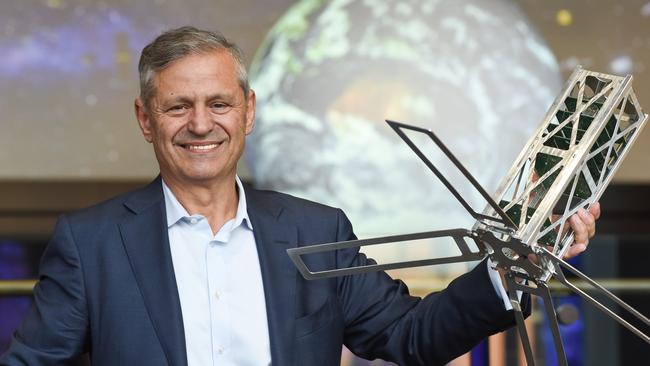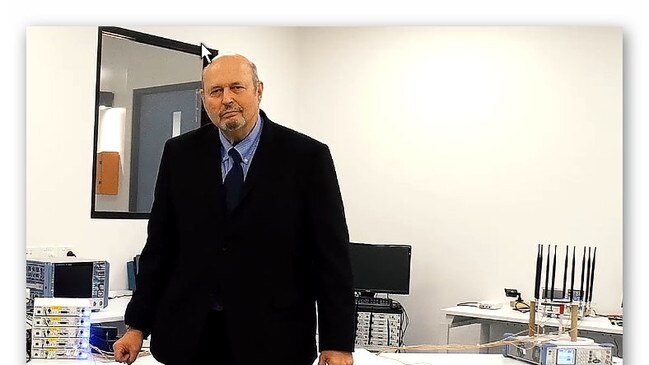Signal strong for low-orbit satellite centre
Tracking livestock and detecting unlawful boat movements are possible with satellite software developed in Australia.

Tracking livestock in remote Australia and even detecting unlawful boat arrivals are applications possible with artificial intelligence-charged satellite software being developed by Australian researchers.
Eighty-four organisations are combining to build AI-charged software systems for satellites, including the explosively growing low-orbit satellite industry.
The closer proximity of small satellites at 500km instead of 35,000km above Earth means faster Earth-satellite communications, less delay or latency in transmissions and easier interaction with the ground.
Researchers say the satellites are capable of delivering gigabit broadband speeds to remote and regional Australia.
The University of South Australia, which leads the research body, and Macquarie University yesterday announced inception of the Co-operative Research Centre for Smart Satellite Technologies and Analytics. It has $190 million in investments and cash from industry and $55m from the federal government.
The industry around these small toaster-sized satellites travelling in low orbits from 500km to 1500km above Earth is blossoming. SpaceX’s Starlink, Amazon and Facebook are among organisations wanting to launch “constellations” of dozens of these satellites. London-headquartered OneWeb launched the first four of its satellites in February.
Researchers see an opening for Australia to develop AI-charged smart software used in low-orbiting satellites with high-resolution image cameras. The proximity of the satellites will aid the system’s ability to identify smaller objects.
But instead of sending screeds of data for researchers to unravel on the ground, the satellites could use image recognition to identify objects and alert staff on the ground to what matters.
SmartSat chief executive Andy Koronios said identifying diseases in vegetation, shipping including unlawful boat arrivals, and the movement of livestock around a property in remote Australia could be enhanced by AI.
Backers include Nova Systems, Optus, Shoal, and FrontierSI, along with global companies with an Australian presence such as Airbus, BAE, MDA, Northrop Grumman, Saab, SciSys, Dassault Systems, and Thales.
Professor Koronios said that apart from identifying objects on the ground, the satellites could offer “Gigabyte internet” to any part of the country using laser communications. “If you're using laser communications ... you’re going to the Gigabyte range,” he said.

Sam Reisenfeld from the School of Engineering at Macquarie University said artificial intelligence in earth base stations could analyse data from robots taking core samples in remote areas with findings relayed via satellite. “A new generation of low-cost smart satellite technology has the potential to enhance agriculture, mining, communication and national security,” Associate Professor Reisenfeld said.
Professor Koronios said global space technologies and industries were worth more than $500 billion but that success has been underpinned by serious global investment in research.
“Australia has had a strong pedigree and a long history in space with excellent scientific capabilities in instrumentation and communications technologies, but until now the research has not been brought together to build a new industry for Australia, and to capitalise on the exponential growth of the global space economy,” he said.
“Our goal in bringing together the bid for the SmartSat CRC was to show the huge potential and capacity there is in Australia to make an impact globally by developing leapfrogging technologies in areas where we have some of the best expertise on the planet – AI, advanced communications and remote sensing analytics.”
The new centre will be headquartered in South Australia.



To join the conversation, please log in. Don't have an account? Register
Join the conversation, you are commenting as Logout